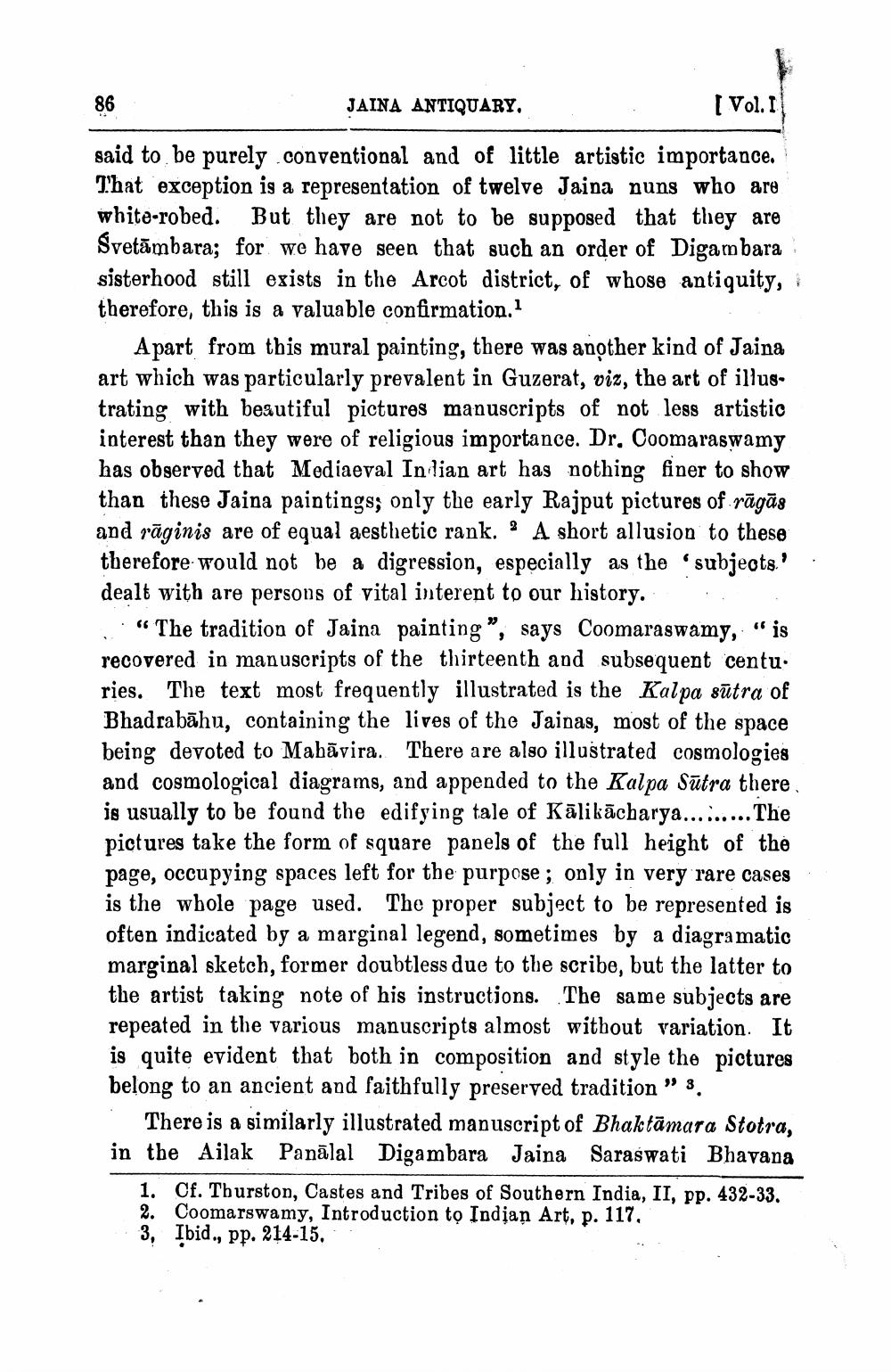________________
86
JAINA ANTIQUARY,
I Vol. II
said to be purely .conventional and of little artistic importance. That exception is a representation of twelve Jaina nuns who are white-robed. But they are not to be supposed that they are Svetāmbara; for we have seen that such an order of Digambara sisterhood still exists in the Arcot district, of whose antiquity, : therefore, this is a valuable confirmation. 1
Apart from this mural painting, there was another kind of Jaina art which was particularly prevalent in Guzerat, viz, the art of illustrating with beautiful pictures manuscripts of not less artistic interest than they were of religious importance. Dr. Coomaraswamy has observed that Mediaeval Inlian art has nothing finer to show than these Jaina paintings; only the early Rajput pictures of rāgās and rāginis are of equal aesthetic rank. ' A short allusion to these therefore would not be a digression, especially as the subjeots.' . dealt with are persons of vital interent to our history.
"The tradition of Jaina painting”, says Coomaraswamy, "is recovered in manuscripts of the thirteenth and subsequent centu. ries. The text most frequently illustrated is the Kalpa sūtra of Bhadrabāhu, containing the lives of the Jainas, most of the space being devoted to Mabāvira. There are also illustrated cosmologies and cosmological diagrams, and appended to the Kalpa Sūtra there is usually to be found the edifying tale of Kālikācharya......... The pictures take the form of square panels of the full height of the page, occupying spaces left for the purpose; only in very rare cases is the wbole page used. The proper subject to be represented is often indicated by a marginal legend, sometimes by a diagramatic marginal sketch, former doubtless due to the scribe, but the latter to the artist taking note of his instructions. The same subjects are repeated in the various manuscripts almost without variation. It is quite evident that both in composition and style the pictures belong to an ancient and faithfully preserved tradition" 3.
There is a similarly illustrated manuscript of Bhaktāmara Stotra, in the Ailak Panālal Digambara Jaina Saraswati Bhavana
1. Of. Thurston, Castes and Tribes of Southern India, II, pp. 432-33. 2. Coomarswamy, Introduction to Indian Art, p. 117. 3, Ibid., pp. 214-15.




